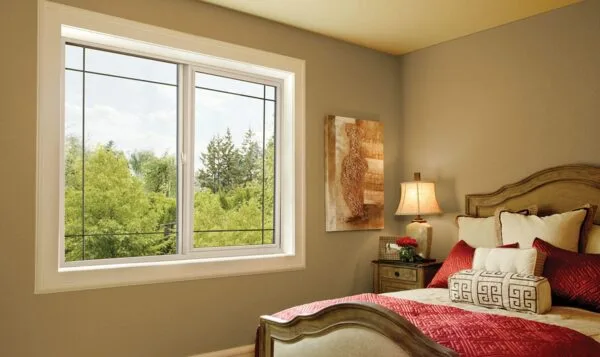When creating a charming and inviting home, few things can rival the timeless elegance of well-maintained windows. Beyond their functional purpose, windows can serve as captivating focal points, offering glimpses into the world outside while flooding your living spaces with natural light. However, over time, even the sturdiest wood windows may show signs of wear, with deteriorating glazing being a common issue. Fear not! This comprehensive guide will delve into window glazing, equipping you with the knowledge and techniques to rejuvenate your windows, enhance their energy efficiency, and restore their aesthetic appeal. So, let us roll up our sleeves and discover the transformative power of window glazing.
What is Window Glazing?
Window glazing refers to both the glass elements in windows and the process of securing them. The term encompasses the entire system of glass panes and the methods used to seal them within window frames, creating a protective barrier against weather elements while providing insulation.
Traditional glazing relies on putty, a mixture of linseed oil and whiting, carefully applied around glass edges to create watertight seals. This centuries-old technique remains valued for its durability and authentic appearance, particularly in historic preservation. The putty hardens over time while maintaining enough flexibility to accommodate natural building movement and temperature changes.
Modern glazing techniques have evolved significantly, incorporating advanced materials and manufacturing processes. Double and triple glazing units feature multiple panes separated by inert gases like argon or krypton, dramatically improving thermal and acoustic insulation. These units typically use silicone sealants and rubber gaskets instead of traditional putty, offering superior weather resistance and requiring less maintenance.
The benefits of proper window glazing extend beyond basic weatherproofing. Quality glazing systems reduce energy costs by minimizing heat transfer, dampen external noise, prevent condensation, and protect interior furnishings from UV damage. In modern construction, glazing choices significantly impact a building’s overall energy performance and comfort levels.
How to Glaze a Window
Now, let us discuss the step-by-step process of glazing windows. First and foremost, it is important to inspect your windows thoroughly, identifying any areas that require attention. Look for cracked or damaged putty, loose glass panes, or signs of moisture infiltration.
Obtain the Necessary Tools & Materials
Once you have assessed the condition of your windows, gather the necessary tools. This will include:
- Glazing Compound or Putty: This is the primary material utilized to create a seal around the windowpane. Traditional glazing putty is often made from a mixture of linseed oil and whiting, while modern glazing compounds may be formulated differently.
- Glazing Points: These small metal or plastic clips secure the glass pane before applying the glazing compound. They help hold the glass firmly against the window frame.
- Glazing Knife: A glazing knife is a specialized tool with a thin, flat blade used to remove old putty, apply new putty or glazing compound, and smooth it along the edges of the windowpane.
- Paint Scraper or Putty Knife: This tool is handy for removing any loose or cracked putty and preparing the window frame for reglazing.
- Glass Cleaner: It is essential to clean the window thoroughly before applying new glazing. A glass cleaner or a mixture of vinegar and water will remove dirt, grime, and old residue
- Caulking Gun: If you are using a modern glazing compound or sealant, a caulking gun will be required to apply it evenly and with control.
- Sandpaper: In some cases, sanding the window frame may be necessary to create a smooth surface for the new glazing.
- Safety Equipment: You should prioritize safety during the glazing process. Wear protective gloves, safety glasses, and a dust mask to prevent injuries and minimize exposure to harmful substances.
Step #1: Remove Old Putty
Prepare for a transformative window makeover by setting up a drop cloth. This essential step ensures easy cleanup of the inevitable debris of removing old putty. Now, it is time to channel your inner craftsman as we embark on this hands-on journey.
With your chisel and hammer in hand, approach the task with patience and precision. Gently chip away the aged glazing putty, not breaking the glass or leaving unsightly marks on the wood. If the putty proves stubborn, fear not! There are helpful tools at your disposal. Consider employing the gentle heat of an IR Paint Stripper or a similar tool to soften and loosen tenacious putty, making the removal process a breeze.
Remember, you do not need to remove all the existing putty. Focus on removing loose and failing portions, as the new putty will bond securely to remnants of the old. However, resist the temptation to skim-coat the old putty with new; a thin layer will not withstand the test of time.
Step #2: The Rabbets
The glazing rabbets, those recessed channels where the glass will rest, require special attention to ensure a long-lasting bond. Begin by brushing away any lingering dust, leaving a clean canvas for our glazing masterpiece. Now, grab a rag and liberally apply boiled linseed oil to the rabbets. If the wood quickly absorbs the oil, do not hesitate to use multiple coats. The goal is to achieve a slightly shiny appearance, indicating that the wood has absorbed the necessary amount of oil.
As you set aside the oil-soaked rag to air dry, remember to handle it carefully. Avoid balling it up, as drying oils like boiled linseed oil generates heat and may lead to spontaneous combustion.
Step #3: Replace Glazing Points
Glazing points play a crucial role in holding the glass firmly in place, working in tandem with the putty. If some glazing points are missing or inadequate, it is time to step in and ensure a secure fit. Add one glazing point per side, with an additional point for every 12 inches of glass length.
To simplify the installation process, consider utilizing triangle glazing points. Press them firmly into the wood, ensuring they sit behind the edge of the forthcoming glazing putty.
Step #4: Apply the Glazing Putty
Now comes the artistic part—applying the glazing putty to bring your windows to life. Take a handful of Austin’s Glazier’s Putty and knead it in your hand, softening it to a workable consistency. Pack the putty tightly into the rabbets using your glazier’s knife. At this stage, perfection is not the goal; focus on achieving a snug fit and an ample amount of putty.
With the putty packed, it is time to refine your glazing lines. Starting from a corner, hold the knife at an angle between the glass and wood, applying steady pressure to create a smooth, straight line of putty on all sides. Pay special attention to the corners, crafting clean, mitered appearances. Double-check your work from the inside, ensuring that the putty remains hidden from view. Should you spot any putty peeking out, draw a new line slightly smaller than the previous one until you achieve the desired result.
Step #5: Clean with Whiting
Now that your putty lines are complete, it is time to unveil the true splendor of your windows. Grab a chip brush and dip it into whiting powder, a magic ingredient that will cleanse the putty of oils and aid its curing process. Gently brush the whiting over the surface, wiping away the oils and leaving the glass pristine. Ensure you remove any remaining dust by brushing it off.
Step #6: Finish with Paint
It is time to apply a final coat of paint to protect and complete the glazing process. Traditional glazing putty, such as Austin’s Glazier’s Putty, requires painting for long-lasting results. Wait until the putty develops a dry surface (typically 3-5 days for Austin’s, but it may vary for other putties). You will know it is ready when the surface feels oil-free and exhibits a tough texture. Be cautious, though, as it will still be soft enough to leave fingerprints or dents if mishandled.
No need to prime the putty; two high-quality coats of acrylic or oil-based paint will suffice. Extend the paint slightly onto the glass by 1/16″ to 1/8″ to ensure a robust seal. Avoid using tape or razors to cut back the paint, as this may compromise the integrity of the paint-to-glass seal.
Replace Your Old Wood Windows with DaBella’s Glasswing Replacement Windows
Take the leap into a brighter, more energy-efficient future by replacing your old, worn-out wood windows with DaBella’s state-of-the-art Glasswing vinyl windows. Experience the transformative power of modern technology as it enhances your home’s beauty, comfort, and energy performance.
Our Glasswing vinyl windows are meticulously designed to exceed expectations. With superior insulation properties and advanced construction, they ensure optimal energy efficiency, reducing your reliance on heating and cooling systems and lowering your utility bills.
But that is not all – our commitment to quality is unwavering. Each Glasswing window is built to last, constructed with precision and durability in mind. Backed by a comprehensive warranty, you can trust that our windows will stand the test of time, providing you with lasting beauty and performance.
Do not let your old windows hold you back. Join countless homeowners who have embraced the benefits of DaBella’s Glasswing vinyl windows. It is time to upgrade your home and make a lasting investment in its future.
Contact us today at 844-DaBella to learn more about our window replacement services and take the first step towards a brighter, more energy-efficient home. Your journey to a better living environment starts now!

